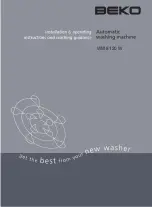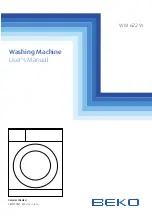
– 173 –
WARNING :
Turn OFF the power before starting the work so as to prevent accidents caused by abrupt start of the sewing machine
Trouble
Cause (1)
Cause (2)
Check and corrective measures
1. Thread breakage
1-1) Threading
1-A) Thread caught in thread guide, Incor-
rect threading
Refer to threading diagram.
1-2) Thread path
2-A) Resistance produced by flaw, burr,
rust etc. around needle entry of throat
plate, stitch tongue, looper, spreader,
needle thread take-up auxiliary thread
tension adjustment, needle guide,
thread tension disc etc.
Remove the flaw, burr etc. and process the
thread guide finish. However, replace such im-
portant parts as looper or throat plate etc. with
the new part bec ause their shape is changed
by being processed.
1-3) Needle guard
3-A) Strong contact of needle against
needle guard produces a sharp edge
in needle guard resulting in thread
breakage.
In case needle exchanger, or needle guard is
worn out, replace it with the new part.
1-4) Needle
4-A) Too thin needle for the thread used.
Replace it with an appropriate needle.
1-5) Needle heat
5-A) Needle is heated depending on fabric
type, number of fabrics, sewing speed
resulting in thread breakage.
Use thinner needle. Reduce the sewing speed.
Use silicon oil lubricant device.
1-6) Thread
6-A) Poor quality and weakness of thread.
Replace it with the thread of good quality.
1-7) Thread tension
7-A) Too strong thread tension
Reduce thread tension. needle thread guide
rod is positioned too high making the thread
tension too strong.
1-8) Interference
8-A) Interference with feed dog, throat
plate due to the incorrect mounting
height of looper
Mount it in the correct position.
1-9) Chain-off thread defect
9-A) Flaw produced in stitch tongue in
throat plate, feed dog, tongue in
presser foot, underside in presser
foot.
Remove the flaw, burr etc.
1-10) UT59
Thread hook
10-A) Flaw of thread hook
Remove the flaw, burr etc.
14. Troubles and corrective measures
















































